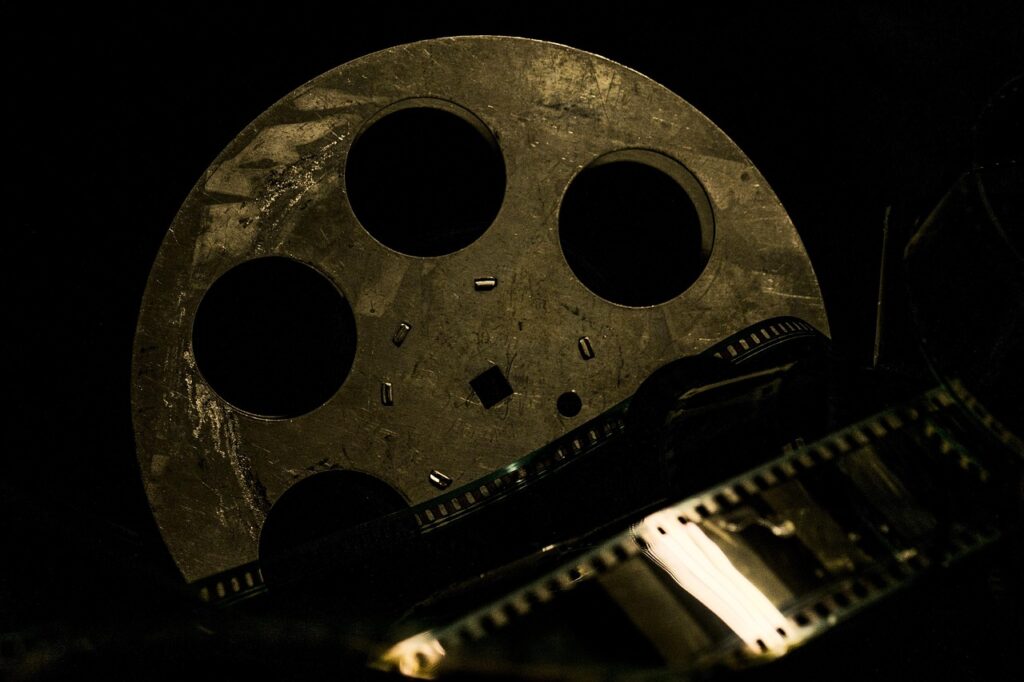
In the vast landscape of cinema, where masterpieces dazzle and blockbusters entertain, there exists a darker, yet undeniably fascinating, corner reserved for films that simply… failed. We’re not talking about movies that are merely forgettable or uninspired; we’re diving headfirst into the realm of the truly awful, the ones that critics universally panned, audiences largely rejected, and time has, paradoxically, enshrined in infamy.
Indeed, the concepts of “worse” and “worst” are incredibly useful in describing these cinematic catastrophes. As forms of the word “bad,” they perfectly capture the escalating degrees of creative misjudgment and technical ineptitude that define the entries on our list. “Worse” implies a comparison to one other thing, suggesting a decline in quality, while “worst” signifies the absolute nadir, the lowest point in a comparison of many—or even every—possible option.
From pre-Code exploitation shockers that barely made a splash, to ill-conceived biopics and sci-fi spectacles that became punchlines, these films represent the “worst-case scenarios” of filmmaking. They are the prime examples of when creative visions go spectacularly awry, or when a production simply misses the mark in every conceivable way. Join us as we explore some of the most notorious films ever made, a collection of dull box office bombs and critical disasters that you can—and probably should—safely skip.

1. **Maniac (1934)**Kicking off our journey into cinematic ignominy is Dwain Esper’s 1934 exploitation-horror film, *Maniac*. This pre-Code relic stands as a testament to early filmmaking’s wilder, more unhinged side, openly leaning into themes of sex, violence, and drugs at a time when moral codes were still finding their footing. It’s a film that pushed boundaries, albeit with dubious artistic merit, and quickly cemented its place in the annals of truly awful cinema.
The plot, a loose and rather disjointed adaptation of Edgar Allan Poe’s chilling story “The Black Cat,” follows a vaudeville impersonator who inexplicably becomes the assistant to a mad scientist. The narrative meanders, often veering into bizarre and unsettling territory, reflecting the film’s chaotic and often incomprehensible structure. What was perhaps intended as a dark psychological thriller devolved into something far less coherent, leaving audiences bewildered and critics appalled.
Promoted disingenuously as a documentary on mental illness, *Maniac* drew widespread criticism for its exploitative nature. Reviewers lambasted the film for its gratuitous footage, particularly scenes depicting women undressing, which felt less like artistic choices and more like thinly veiled attempts to shock. Furthermore, the film was notorious for plagiarizing horror sequences directly from the 1922 silent film *Häxan*, showcasing a distinct lack of originality that further sullied its reputation.
Prominent voices in film criticism have not been kind to *Maniac*. Danny Peary famously believes it to be “the worst film ever made,” a sentiment echoed by Charlie Jane Anders of Gawker Media’s io9, who described it as “possibly the worst movie in history.” Its notoriety is so profound that Rotten Tomatoes included it on its list of movies “So Bad They’re Unmissable,” recognizing its accidental entertainment value. *Vanity Fair* also placed it on its list of the 20 worst movies ever, and it earned a spot in John J. B. Wilson’s definitive *The Official Razzie Movie Guide: Enjoying the Best of Hollywood’s Worst*, firmly cementing its status as a foundational failure in film history.

2. **Reefer Madness (1936)**Next on our list of cinematic misfires is the infamous anti-cannabis propaganda film, *Reefer Madness*, originally released under the alarmist title *Tell Your Children*. This 1936 American exploitation feature is a melodramatic whirlwind designed to instill fear, depicting the supposed perils of marijuana use with such exaggerated zeal that it became a classic of unintentional comedy. Its various alternate titles, including *The Burning Question*, *Dope Addict*, *Doped Youth*, and *Love Madness*, hint at the sensationalism it aimed to achieve.
The film’s narrative is a breathless cascade of increasingly absurd events, all supposedly triggered by high school students being lured into smoking cannabis by nefarious pushers. What follows is a dizzying descent into a litany of crimes and social ills: a hit and run accident, manslaughter, murder, attempted rape, a terrifying journey into madness, association with organized crime, and ultimately, suicide. Each incident is presented with a ham-fisted sincerity that, rather than convincing audiences, often provokes laughter.
*Reefer Madness* is so fundamentally flawed that it has been dubbed “the grand-daddy of all ‘Worst’ movies” by none other than Leonard Maltin, a high honor in the realm of bad cinema. *Pacific Standard* went further, calling it “one of the first films ever to be considered transcendentally bad,” a classification reserved for films that transcend mere incompetence to achieve a legendary status of awfulness. Its terrible acting and wildly exaggerated drug-addicted stereotypes are frequently cited as key reasons for its disastrous critical reception.
Despite, or perhaps because of, its profound shortcomings, *Reefer Madness* morphed from a commercial flop into a beloved cult classic. *News.com.au* aptly described it as a “disastrous flop turned cult classic,” noting its enduring appeal among audiences who appreciate its sheer absurdity. Natalli Amato of *The Daily Dot* included it on her list of the best worst movies, observing that it “may be one of the worst movies of all time for the fact that it accomplished the exact opposite of its intended goal”—becoming a favorite among stoners instead of a deterrent. Leafly’s Danté Jordan echoed this, criticizing its numerous inaccuracies regarding marijuana use and labeling it “easily one of the most uncreative and tone-deaf pieces of anti-cannabis propaganda,” solidifying its reputation as a must-skip for those seeking genuinely good cinema.
3. **The Terror of Tiny Town (1938)**Stepping into another unique corner of cinematic oddities, we encounter *The Terror of Tiny Town*, a 1938 musical Western that holds the distinction of being the only film of its kind with an all-dwarf cast. Directed by Sam Newfield and produced by Jed Buell, this movie is a peculiar artifact from an era when filmmakers were willing to experiment with unconventional concepts, even if the execution left much to be desired. Its premise alone is enough to pique curiosity, but its quality quickly shifts that curiosity to bewilderment.
The film, initially obscure, was pulled from the depths of cinematic history to become a camp classic, enjoying a resurgence in college and midnight screenings during the early 1970s. This unexpected cult status highlights how some films, despite their undeniable flaws, find an audience that appreciates their unique brand of badness. It became a staple for those seeking out-of-the-ordinary viewing experiences, proving that even the most peculiar productions can carve out a niche for themselves.
Despite its endearing cult following, *The Terror of Tiny Town* has consistently landed on lists of the worst films ever made. It was famously included in Michael Medved’s influential 1978 book, *The Fifty Worst Films of All Time*, a definitive text for aficionados of terrible cinema. Since then, it has continued to be recognized for its abysmal quality by platforms like *Flavorwire* and *Rotten Tomatoes*, as well as being featured in *The Golden Turkey Awards*.
Critics have been particularly harsh, yet sometimes affectionately so, regarding its overall impact. Melvin Defleur bluntly referred to it as “Perhaps the worst film of all time,” a stark judgment on its technical and narrative shortcomings. However, Gabriel Ricard offered a more nuanced take, listing it as the worst film ever made but adding, “not only is it pretty terrible, but *Tiny Town* is also pretty endearing.” This dual perception — acknowledging its profound badness while appreciating its accidental charm — perfectly encapsulates its unique legacy. It even earned the dubious honor of being the first film featured on *Canned Film Festival*, a late-night television show dedicated to showcasing the worst movies ever made, further solidifying its legendary status among cinematic failures.
Read more about: Your Ultimate Must-Watch List: 12 Essential Movies That Will Absolutely Blow Your Mind (Seriously!)
4. **The Babe Ruth Story (1948)**Moving into the post-war era, we find another infamous entry: *The Babe Ruth Story* from 1948. This baseball film biography of the legendary Babe Ruth, starring William Bendix, Claire Trevor, and Sam Levene, sought to capture the magic of America’s beloved sports hero. However, it achieved something entirely different, delivering a cinematic experience so fraught with inaccuracies and saccharine sentimentality that it became a benchmark for biographical misfires.
The film was notably rushed into release while Babe Ruth himself was still alive, a decision that perhaps contributed to its lack of polish and historical fidelity. Its notorious status is largely due to its glaring historical liberties and a penchant for exaggerated, almost fantastical, storytelling. The *New York Times* famously described it as “the *Plan 9 from Outer Space* of baseball biopics,” a powerful comparison that instantly places it among the all-time worst films, regardless of genre.
One scene, in particular, has become legendary for its sheer absurdity and serves as a prime example of the film’s tone-deaf approach: Ruth promises a dying child that he will hit two home runs, and upon delivering on this promise, the child is miraculously cured of his ailments. This overtly melodramatic and unbelievable moment encapsulates the film’s inability to grasp the nuanced reality of its subject, opting instead for a contrived feel-good narrative that ultimately feels disingenuous.
The critical reception was overwhelmingly negative, with many prominent figures expressing their dismay. Baseball Hall of Famer Ted Williams, no stranger to the sport’s true stories, believed it to be “the worst movie he had ever seen.” The *Washington Times* went further, stating that it “stands as possibly the worst movie ever made,” a damning indictment from a major publication. Its consistent presence on “nearly every list of the worst movies ever made,” as noted by Paul Newberry of the *Associated Press* and the *Spokesman-Review*, is with “good reason,” underscoring its widespread critical condemnation.
Jack Mathews of *Newsday* labeled *The Babe Ruth Story* “what many people consider to be the worst sports movie of all time,” an assessment echoed by *The A.V. Club*. Furthermore, *Moviefone* and *Spike* have both called it one of the worst biopics in cinema history, highlighting its failure not just as a sports film, but as a truthful and compelling portrayal of a real person. Its inclusion in entertainment writer Michael Sauter’s book, *The Worst Movies Ever Made*, is a fitting tribute to its enduring legacy as a cinematic blunder.

5. **Plan 9 from Outer Space (1957)**When discussing the absolute nadir of filmmaking, one title inevitably rises to the top: *Plan 9 from Outer Space*. This 1957 science fiction horror film, directed by the legendary Ed Wood, is not merely considered bad; it is frequently hailed as the quintessential “worst film ever made.” While the specific details of its plot and production are legendary in their own right, even the bare mention of its title in critical discussions immediately conjures images of filmmaking incompetence on an epic scale.
Its reputation is so pervasive that it serves as a critical benchmark for failure. *Las Vegas CityLife* explicitly named *Reefer Madness* as the “worst ever” runner-up to *Plan 9 from Outer Space*, positioning Wood’s creation as the undisputed champion of terrible cinema. This comparison alone speaks volumes, underscoring *Plan 9*’s iconic status as the ultimate example of a film that defies conventional standards of quality in every aspect imaginable.
The film’s influence extends far beyond mere notoriety. The *New York Times*, in its critique of *The Babe Ruth Story*, damningly described the baseball biopic as “the *Plan 9 from Outer Space* of baseball biopics.” This evocative comparison demonstrates how *Plan 9* has transcended its own existence to become a widely understood shorthand for unparalleled cinematic failure. To be likened to *Plan 9* is to be condemned to the pantheon of unwatchable, yet perversely fascinating, films.
*Plan 9 from Outer Space* embodies everything that can go wrong in a film production, from nonsensical dialogue and continuity errors to visibly amateur special effects and bewildering plot holes. Its consistent presence atop “worst ever” lists across various critical sources, despite its own entry being sparse here, solidifies its position as a film that must be experienced to be believed, yet also one that audiences are perfectly justified in skipping. It is a true cinematic anomaly, a film whose legacy is built entirely on its spectacular and enduring badness.” , “_words_section1”: “1965
Continuing our tour through cinematic infamy, we press on to uncover more critically condemned features that have earned their regrettable places in history. This next batch expands our collection to include a notorious post-war drama, iconic Ed Wood productions, and other profound failures from the mid-20th century. These are the films that critics, audiences, and time itself have deemed worthy of a definitive skip, yet whose very badness makes them perversely memorable.
6. **No Orchids for Miss Blandish (1948)**Transitioning from the mid-century’s most glaring cinematic missteps, we arrive at *No Orchids for Miss Blandish*, a 1948 release that has firmly cemented its place on numerous compilations of the worst films ever made. This particular feature, emerging in the post-war era, is often cited by critics and film enthusiasts alike as a compelling example of a production that, despite its apparent intentions, dramatically failed to deliver on any measure of quality or coherence, earning it a lasting spot in cinematic infamy.
The consistent inclusion of films like *No Orchids for Miss Blandish* on such lists speaks to a broader consensus within the film community regarding projects that simply don’t work. These are feature-length films, born out of either commercial ambition or artistic endeavor, and whether professionally backed or independently produced, they ultimately prove unsatisfactory. Their journey typically involves an initial release in theaters, followed by home video, where their shortcomings become even more pronounced.
The diverse range of sources that condemn such movies is extensive, encompassing respected film guides, critical aggregators, and even satirical awards designed to highlight cinematic failures. From the comprehensive evaluations found in Leonard Maltin’s Movie Guide to the pointed recognition by platforms like Rotten Tomatoes and the notorious Golden Raspberry Awards (Razzies), the consistent judgment against *No Orchids for Miss Blandish* underscores its enduring reputation as a truly regrettable viewing experience.

7. **Glen or Glenda (1953)**Moving into the burgeoning cinematic landscape of the 1950s, we encounter *Glen or Glenda* from 1953, a film that instantly conjures images of profound creative misjudgment and an almost accidental genius for being truly awful. This picture has long been a fixture in discussions surrounding cinema’s most critically condemned outputs, making its way onto countless lists dedicated to the industry’s most significant blunders. Its very title is often uttered with a mixture of disbelief and perverse admiration by those who appreciate the unique art of bad filmmaking.
The widespread condemnation of *Glen or Glenda* stems from meticulous assessments by a multitude of critics, whose perspectives are frequently published across diverse media sources. These discerning evaluators meticulously identify the substantial artistic and technical shortcomings that prevent such films from ever ascending to any respectable standard of quality. It’s a film that embodies the kind of cinematic endeavor that is undeniably an “express personal statement,” yet one that spectacularly misses its mark in nearly every conceivable way.
What makes films like *Glen or Glenda* particularly fascinating is their unique capacity to transcend mere incompetence and achieve a peculiar cult status, precisely *because* of their overwhelming badness. While these productions undoubtedly fall short of their original artistic or commercial goals, they inadvertently succeed in presenting an utterly unique and often bewildering viewing experience. This accidental entertainment value ensures their continued discussion, albeit as exemplars of how creative visions can go spectacularly awry.
This notorious status is further solidified by its frequent appearances on definitive compilations such as *The Golden Turkey Awards*, and through the insightful, often scathing, critiques offered by pop culture writers like Nathan Rabin in his “My World of Flops” series. These analyses dissect the film’s baffling ineptitude, highlighting its sheer watchability not for its quality, but for its captivating failure, cementing its legacy as a film definitively worth skipping for traditional cinematic enjoyment.
8. **Robot Monster (1953)**Continuing our journey through films best left unseen, 1953 also gave us *Robot Monster*, a title that, much like its contemporaries on this list, stands as a prominent entry in the disheartening realm of critically condemned cinema. Its name is almost synonymous with discussions concerning the most challenging, unrewarding, and often bewildering viewing experiences in the entire history of film. It’s a true standout in the pantheon of pictures to confidently bypass.
The overwhelming collective judgment against films such as *Robot Monster* is a powerful force, shaped by the insightful opinions of a vast array of industry voices. These include the rigorous evaluations found on platforms like Metacritic and the candid assessments presented in Roger Ebert’s own curated lists of most-hated films. These respected forums serve as clear and compelling testaments to the broad critical agreement on this film’s pervasive and fundamental flaws, making its recommendation for avoidance all the more clear.
Films that ultimately find themselves on these infamous “worst” lists typically start as feature-length productions, initially brought to life with the earnest intention of providing either entertainment or a profound artistic statement. Yet, they almost universally falter in their execution, leading directly to their ignominious rankings. *Robot Monster*’s enduring legacy, therefore, is inextricably tied to its spectacular inability to meet even the most fundamental cinematic expectations, leaving audiences scratching their heads.
Its firmly established place on compilations such as “The Golden Turkey Awards” further solidifies its position as a film that, rather than offering genuine enjoyment, provides an overwhelming sense of bewilderment and perhaps a few unintended laughs. It serves as a prime candidate for those dedicated filmgoers who are committed to meticulously avoiding cinematic disappointment and are searching for a definitive guide on what to skip.
Read more about: Beyond Godzilla: Our Picks for the Top 12 Most Underrated Monster Movies of All Time You Need to See!

9. **The Conqueror (1956)**As our chronological tour of cinematic infamy moves deeper into the mid-1950s, *The Conqueror* (1956) powerfully emerges as another significant example of a cinematic undertaking that, despite its ambitious scale and considerable resources, found itself irrevocably relegated to the notorious ranks of the “worst films ever made.” This particular feature has garnered widespread notoriety, not just for its narrative and artistic failings, but for a host of troubling production details that only add to its regrettable legacy.
The critical consensus that consistently places films like *The Conqueror* on these infamous lists stems from a deep-seated analysis of profound breakdowns in fundamental cinematic elements. This includes everything from weak storytelling and unconvincing performances to woefully inadequate production values. These aren’t merely subjective opinions, but often meticulously justified assessments rooted in established cinematic principles, clearly indicating why the film is a definitive misstep.
The disheartening journey from an anticipated theatrical release to becoming a permanent, cautionary fixture on lists of the “worst” films is a common and unfortunate trajectory for many entries highlighted here. These films are ultimately remembered not for any triumphs they might have briefly promised, but for their spectacular missteps and creative failures, which transform them into enduring lessons in what not to do in moviemaking. They become indelible examples of ambition gone awry.
Its consistent inclusion in critical resources such as entertainment writer Michael Sauter’s definitive book, *The Worst Movies Ever Made*, and its frequent mention across various prestigious and satirical critics’ compilations, all attest to its unshakeable standing as a film that serious audiences are strongly advised to bypass. *The Conqueror* remains a stark and enduring reminder of those unfortunate occasions when grand cinematic aspirations collide head-on with profoundly regrettable and often bizarre outcomes.
Read more about: Talk About Bad Luck: 10 Movies Where the Cast Faced Secret Tragedies We Only Realized Later
10. **Fire Maidens from Outer Space (1956)**Our final selection on this curated list of cinematic missteps brings us to *Fire Maidens from Outer Space* (1956), another compelling and almost archetypal example of a feature that consistently garners the ignoble distinction of being labeled among the worst films ever produced. Its very title, dripping with B-movie charm, simultaneously hints at its campy nature and its ultimately critically panned execution, making it a fitting conclusion to our tour of cinematic failures.
Films that earn the designation of “worst” frequently share a common and undeniable trait: they are subjects of widespread discussion and criticism across a remarkably diverse array of media sources. This spectrum ranges from highly influential mainstream review aggregators, like Rotten Tomatoes, to beloved cult TV series explicitly dedicated to lampooning truly bad movies, such as *Mystery Science Theater 3000* and its spinoffs. This broad acknowledgment only serves to reinforce their universally low standing in the cinematic landscape.
Regardless of whether they were initially rolled out with great fanfare in bustling cinemas or later achieved a peculiar form of infamy through their subsequent release on home video platforms, these films inevitably carve out a distinct niche for themselves. This unique space is established not through any inherent quality or artistic merit, but rather through their sheer and often spectacular inability to adequately deliver on their original premise. *Fire Maidens from Outer Space* truly epitomizes this accidental and enduring notoriety.
Prolific critics, including those whose comprehensive reviews populate Leonard Maltin’s extensive guides, and the sharp, often hilarious, commentaries provided by satirical platforms like RiffTrax, have all significantly contributed to the film’s lasting and notorious reputation. It is precisely because of these consistent, damning judgments that *Fire Maidens from Outer Space* rightfully secures its place as a prime and undeniable candidate for audiences who are looking for a definitive answer on what to confidently “skip.”
Consequently, the film’s enduring legacy is unequivocally not one of artistic achievement or even modest commercial success. Instead, it is firmly rooted in its identity as a fascinating and often bewildering failure. While it may, for a select few, offer moments of unintended laughter or a nostalgic glimpse into a particular era of low-budget sci-fi, *Fire Maidens from Outer Space* is primarily and overwhelmingly recognized for its profound and widespread cinematic deficiencies, making it a vital entry on our list of films to bypass.
This detailed look at some of cinema’s most infamous failures truly drives home the idea that not every film is destined for greatness, or even basic competence. While the pursuit of cinematic brilliance continues with countless ambitious projects, these ten examples serve as powerful, often bewildering, reminders that sometimes, the most memorable contributions to film history are those that spectacularly miss the mark. So, next time you’re browsing for a movie, consider these entries not as enthusiastic recommendations, but as a definitive, well-justified guide on what to happily skip. Embrace the masterpieces, by all means, but also appreciate the accidental artistry of the truly “worst”—from a safe, informed distance, of course!








